For most people, visiting Machu Picchu is a once in a lifetime experience, but getting there can be a little complicated and stressful.
In this article – How to get to Machu Picchu – I will explain each travel option in detail as well as provide the cost and planning considerations for each method of transport.
Also see: Cost to visit Machu Picchu
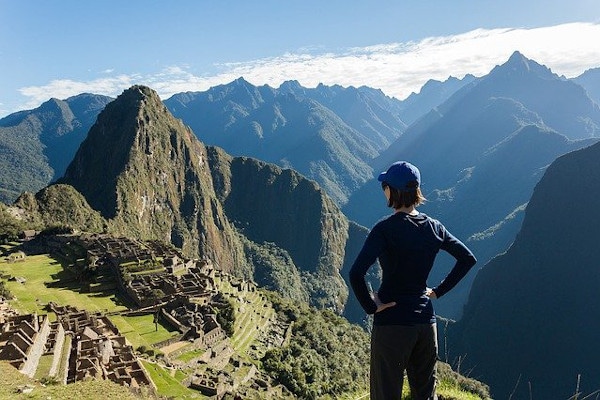
Get a Machu Picchu trek quote
Start planning your Machu Picchu hiking holiday.
How to get to Machu Picchu
The journey usually starts with a flight from your home country to Lima, Peru. If you are flying from within Peru or indeed Bolivia, there are five airports with direct flights to Cusco. They are:
- Arequipa, Peru (1 hour)
- Juliaca, Peru (55 minutes)
- Lima, Peru (1 hour and 15 minutes)
- Nuestra Señora de La Paz, Bolivia (1 hour)
- Puerto Maldonado, Peru (50m)
The main airlines that fly from these destinations to Cusco are LAN, Avianca and Peruvian Air Line.
Once in Cusco, you are approximately 80km (50 miles) South-east of Machu Picchu. From there, here are some ways for how to get to Machu Picchu:
- Joining an organised trek on the Inca Trail or one of the alternative trails to Machu Picchu.
- Catching a train from Cusco or from Ollantaytambo in the Sacred Valley.
- Catching a minivan or bus from Cusco or Ollantaytambo to the town of Santa Maria, which is just north of Machu Picchu. From there, you can continue on foot or by vehicle to Santa Teresa, and then onto Hidroelectrica.
- Arriving at Machu Picchu and presenting your entrance ticket as well as arranging your transport back to Aguas Calientes or Cusco after your tour.
Trails | Typical Itinerary | Difficulty | Ideal For |
|---|---|---|---|
4D/3N | +++ | Those with a deep desire to have an iconic trek and walk along the original route of pilgrimage to Machu Picchu. Entrance via the impressive Inti Punku (Sun Gate). The route can feel crowded though. | |
2D/1N | + | Visitors looking for a non-challenging trekking experience offering a flavour of the classic 4-day Inca Trail. Entrance to Machu Picchu via the unforgettable Inti Punku (Sun Gate). | |
6D/5N | ++++ | Experienced trekkers looking for the ultimate Inca Trail adventure. Combines tough trekking through amazing mountainous landscapes with the iconic Inca Trail route steeped in ancient history. | |
5D/4N | ++++ | For experienced hikers looking for a tough trek with amazing scenery. Main draw card is getting up close and personal with Nevada Salkantay (6,217m / 20,400 ft) and its large mountainous neighbours. Great for unsupported treks as well. | |
4D/3N | ++ | Those who want to immerse themselves in the local culture and meet and interact with authentic Peruvian communities. | |
9D/8N | ++++ | For history enthusiasts who love visiting archeological sites. The ruins at Choquequirao are very impressive and well worth the visit. The trek is relatively tough but flexible, so it can be easily shortened or lengthened depending on your requirements. A great opportunity to see two classic Inca Trail sites in one trek. | |
4D/3N | ++ | Adventure seekers wanting a brilliant trekking option that includes an incredible downhill cycle, trekking, and additional ziplining and river-rafting tours. | |
5D/4N | +++++ | Experienced backcountry trekkers wanting an incredibly diverse and beautiful trail. A tough but unique challenge. You will be one of a handful of trekkers (at a maximum) on this trail. | |
3D/2N | ++ | Trekkers without much time or for those who would like to visit Machu Picchu but also do a little trekking. It offers great scenery and limited interaction with locals. The Huchuy Qosco is definitely worth seeing. |
Trekking to Machu Picchu
The table above might help you decide which trek is best for you. Now, without further, let's discuss the Inca Trail variations as well as alternative treks to reach Machu Picchu in greater detail below.
Classic Inca Trail
The most popular trek to Machu Picchu is the Classic 4-Day Inca Trail, which is a 4D/3N hike from the Sacred Valley all the way to Inti Punku (the Sun Gate) - the sacred entrance to Machu Picchu.
The trek follows original Inca trails that sojourn through incredible cloud forests and high alpine landscapes, as well as passing through a number of impressive Inca ruins.
Due to its popularity and archeological significance, the Inca Trail is highly regulated. Only Peruvian companies with specific trekking licenses can operate the trek and hiking permits are limited to 500 trekkers per day (300 of which are used by guides and porters).
See more in our guides on Machu Picchu permit availability and tipping Machu Picchu guides and porters.
Please Note: If you plan to trek to Machu Picchu via the Inca Trail, you will need to book well in advance. I recommend securing a trekking date at least 6 months before your departure from your home country, particularly if you plan to visit during the peak dry season of May-September.
More on the Classic Inca Trail and its variants to Machu Picchu:

Get a Machu Picchu trek quote
Start planning your Machu Picchu hiking holiday.
Alternative Treks to Machu Picchu
There are also a number of fantastic alternative treks to Machu Picchu, which are quieter than the Classic Inca Trail and do not require permits. Early booking is still recommended during the dry peak season (May-September) though.
For footloose backpackers, it is possible to book an alternative trek to Machu Picchu from Cusco a few days in advance, but this may mean you need to take the long bus route back to Cusco after visiting Machu Picchu. This is because return train tickets may have sold out (see more on this in the Santa Maria – Santa Teresa – Hidroelectrica section below).
All the alternative treks end at Aguas Calientes, the town below Machu Picchu. Trekkers typically spend the night in one of the best hotels in Aguas Calientes and rise early the next morning to catch a bus from Aguas Calientes up to Machu Picchu.
It is possible to hike up to Machu Picchu but be prepared for a 90-minute slog up 2,000 steps!
For detailed route and itinerary guides on the alternative treks to Machu Picchu, I recommend you read our Machu Picchu Trails and Routes article listed above or visit the individual and comparative trail guides highlighted above.
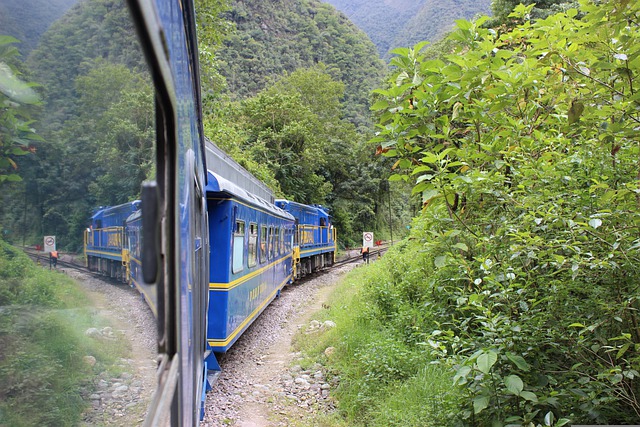
Tips on taking a Train to Machu Picchu
There are several options available to you when it comes to taking the train to Machu Picchu. Most trains depart from either Lima or Cusco and include a variety of other transportation (like taxis, minivans and cars) to get you to your final destination of Machu Picchu.
Before and during your train journey to Machu Picchu, it's important to remember two key things:
- Acclimate to the high altitude either in Cusco or a town situated below it (i.e. Aguas Calientes).
- Budget for all modes of available transportation and make most of your bookings in advance.
Acclimate to the high altitude
Once arriving in Cusco, I recommend not hanging around. Instead, try scheduling your train for the same day as your flight arrival. This will help lower the risk of altitude sickness, as Cusco is situated at 3,400m (11,155 ft) above sea level. This is significantly higher above Aguas Calientes (2,040m / 6,700 ft).
Please Note: If you do decide to stick around this idyllic town, here are some fun things you can do in Cusco and some amazing Cusco restaurants you can check out while you're there.
I recommend you book a hotel for a night or two in Aguas Calientes as this will give you enough time to properly explore Machu Picchu. From here, you can potentially climb Huayna Picchu, Machu Picchu Mountain, or visit the hot springs in Aguas Calientes.
Make your Train Booking in Advance
Cusco Rail Station is in fact in Poroy, a nearby town. A taxi from the centre of Cusco to Poroy takes about 20 minutes and costs a few dollars.
It is important that you book your train tickets as early as possible. Ideally, you should book your train tickets before you book your flights as securing a seat can be tricky. Do not arrive in Cusco with a plan to book your tickets there as you will most likely be very disappointed!
Hotels, trekking companies, and other third parties often block tickets in advance for their customers, and only need to confirm their bookings 11 days before departure, when they pay. Tickets that aren’t confirmed go back onto the market on a first- come-first-serve basis.
You need to make full payment and give your name and passport number to make a booking. Tickets are non-transferable and non-refundable, and you will need your passport to board the train.
Please Note: You need your passport to enter Machu Picchu as well.
If train tickets are sold out from Cusco, you may still be able to get the train from Ollantaytambo Station in the Sacred Valley. It is easy to catch a taxi or minivan to Ollantaytambo from Cusco (or vice versa if your return train from Machu Picchu stops at Ollantaytambo).
Taxis between Cusco-Ollantaytambo cost ~US$40 and take about 1.5 hours. Buses and minibuses are considerably cheaper but take a little longer than the train. Ollantaytambo is an interesting town with a number of Inca ruins situated nearby. I recommend spending a night here on your return trip.
There are two train companies that offer services from Aguas Calientes to Machu Picchu – Peru Rail and Inca Rail. Below, I have provided details on their various services.

Get a Machu Picchu trek quote
Start planning your Machu Picchu hiking holiday.
Peru Rail
Peru Rail operate three services to Machu Picchu, which depart from the following locations:
- Cusco (about 3 hours to Machu Picchu)
- Urabamba (just the Vistadome)
- Ollantaytambo (about 1.5 hours to Machu Picchu)
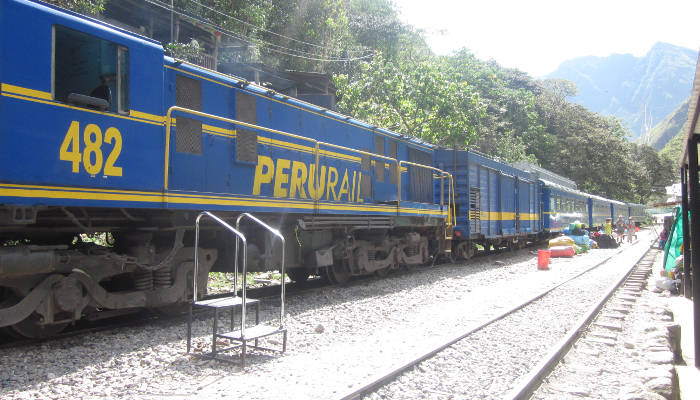
Train tickets can be bought at the following locations:
- their website
- their office in Cusco
- in Lima (Larcomar Shopping centre in Miraflores)
- at the airport
Here are their three services - from the most affordable to the most luxurious trip.
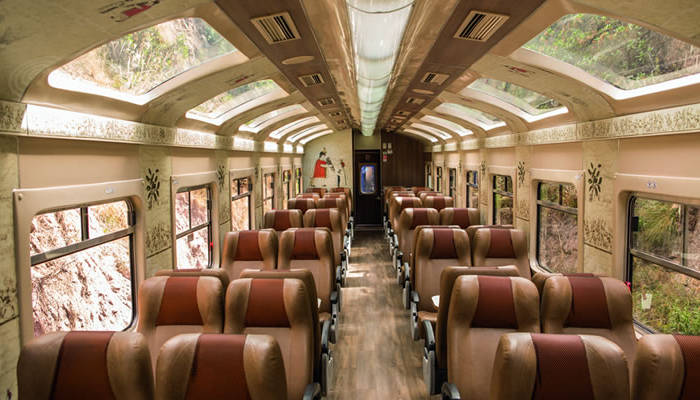
Expedition Service (previously known as the Backpacker)
The Expedition service is the most affordable ticket (bar the service that is run just for Peruvians). The seats are comfortable in this service and arranged so that 2 seats always face each other.
The service has air-conditioning, and the ceiling is partially glassed to provide better views of the scenery. The service also includes a small snack and drink.
A one-way ticket from Cusco to Machu Picchu costs about US$65-75). Click here for timetables and prices.
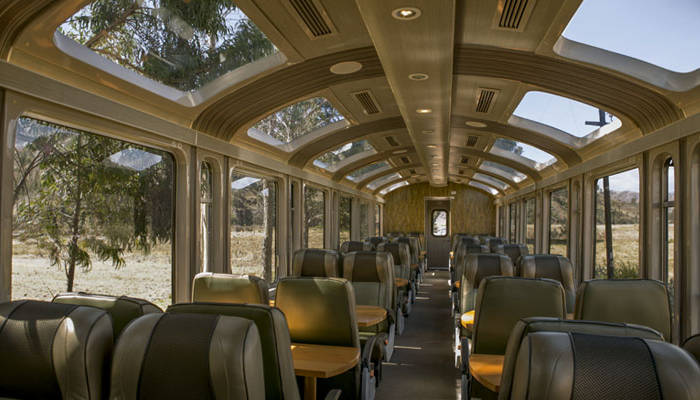
Vistadome
The Vistadome, as the name suggests, is a service which has carriages that maximise the views of the Sacred Valley. The carriage windows are larger than the Expedition train, and the service is a little more luxurious.
The seats are made from comfortable leather and a better snack is served than that provided on the Expedition. On the return journey, you will also be treated to some entertainment from traditional Andean dancers.
A one-way ticket from Cusco to Machu Picchu costs about US$85-95. Click here for timetables and prices.
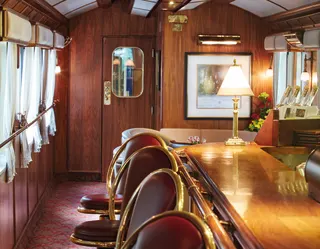
The Belmond Hiram Bingham
The Belmond Hiram Bingham service is for those who want to travel in serious style. The service has won a number of accolades, including being selected as the Best Train in the World by the readers of Condé Nast Traveller UK in 2011, and voted as one of the 10 Most Wonderful Train Journeys in the World by NBC. Since then, the Belmond Hiram Bingham has received even more nominations and awards for their luxurious, 5-star service.
This service has four dark racing blue wagons and carries 84 passengers in total. Two of the wagons are for dining, and there is an observation wagon with a bar.
A round trip will cost you about US$800, but includes:
- Welcome aperitifs upon arrival at Poroy station near Cusco.
- Brunch and an excellent selection of Peruvian wines.
- On-board entertainment.
- Tourist guide for every group of 14 passengers (it's best to bunch up with fellow passengers).
- Bus tickets and transportation to Machu Picchu.
- Tea and snacks in the Belmond Sanctuary Lodge.
- A gourmet dinner on board.
You can find out more about the Belmond Hiram Bingham here or see our guide on the luxury train to Machu Picchu.
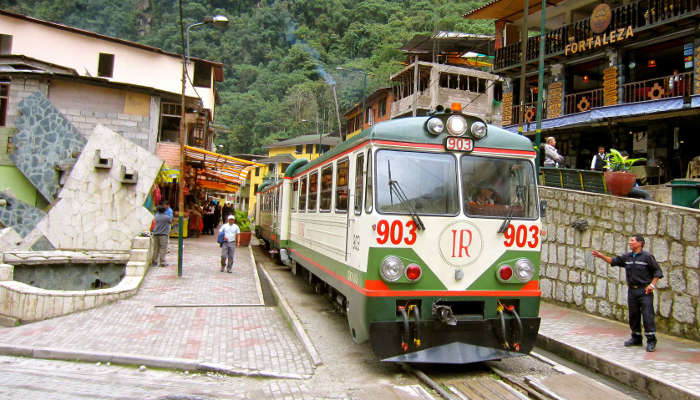
Inca Rail
Inca Rail operates trains from Ollantaytambo only. To get from Cusco to Ollantaytambo, you can use any of the following modes of transportation:
- a 1.5-hour taxi (which costs about US$40)
- a 2.5-hour bus (which costs a few dollars).
- a minivan (which costs about US$5)
Please Note: The best minivans are run by Colectivo and can be caught at Paradero Pavitos.
Once you arrive in Ollantaytambo, there are four Inca Rail services you can use:
- Machu Picchu (Economy)
- Executive Class
- First Class
- Presidential Class
Tickets can be booked on the Inca Rail website, in their Cusco office, or at the airport.
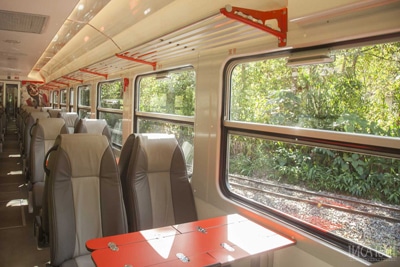
Machu Picchu Train (Economy Train)
The Machu Picchu service is an affordable service that offers comfy seats, onboard snacks and options to pick up last-minute supplies (like insect repellant!)
The train runs three times a day to and from Ollantaytambo to Machu Picchu.
One-way ticket prices range from US$60-US$65. You can check out more details on the train schedule and booking here.
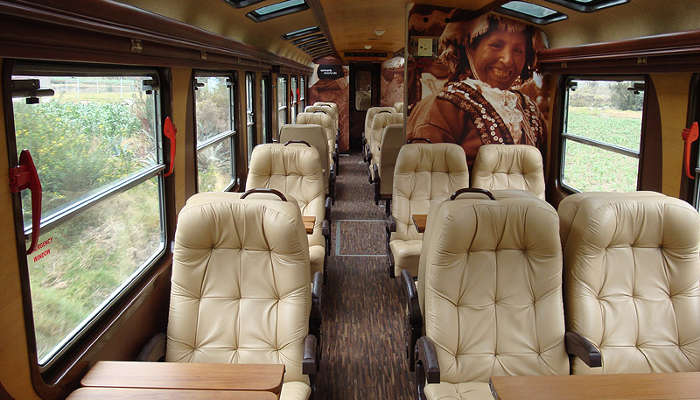
Inca Train Executive Class, First Class and Presidential Class
This Inca Rail train is split into three services – Executive, First and Presidential Class – and runs three times daily.
Prices range from US$60 for a one-way ticket in the Executive Class, up to US$200 in the First Class. The key differences between carriages come down to design, comfort, service and food. The Presidential Class is a chartered carriage that needs to be booked by a group and is priced on application.
Read more about each service level here as well as ticket availability.
Taking a train to Machu Picchu using the Santa Maria – Santa Teresa – Hidroelectrica Station Route
If you don’t manage to book a train ticket or if you are on a budget, don’t fret. You can still get to Machu Picchu using the Santa Maria – Santa Teresa – Hidroelectrica Station Route. This is a long and tiresome route but is a lot cheaper and can be incorporated into a mini expedition!
Santa Maria is a small town north of Machu Picchu that is connected to Cusco and Ollantaytambo by road. See the trekking map below to get your bearings - Santa Maria is located near Chaullay.
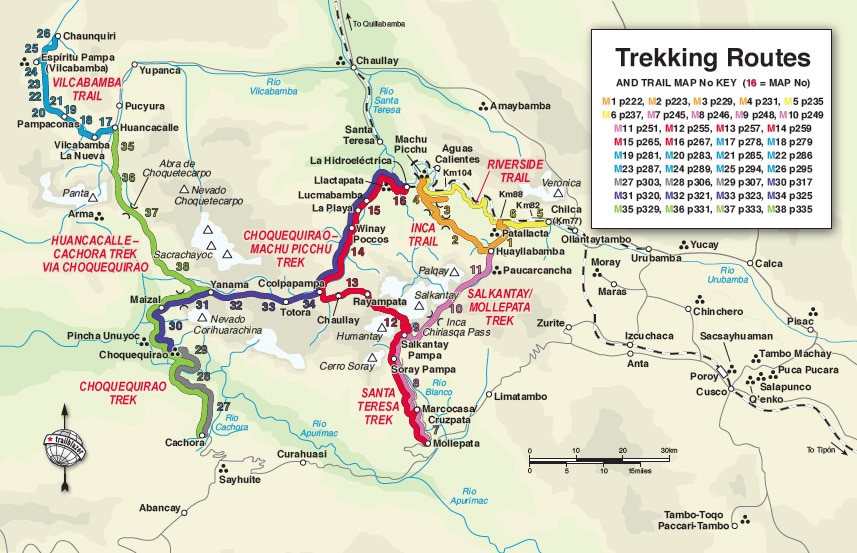
From Cusco, you have two options for trips to Santa Maria:
- 4 hours by minivan (which costs about US$10-US$15 per person).
- 5 hours by bus (which costs about $US5).
From Santa Maria, you can trek to Santa Teresa, a 12km (7.4 miles) hike, which takes about 6-7 hours of hiking. Alternatively, you can catch public transport, which takes about 1.5 hours.
Santa Maria (and many areas around it), as far north to Quillabamba, were severely impacted by landslides in 1998. This means that infrastructure in the area has been set back a lot.
Please Note: Landslides are an annual risk every year during the wet season (Nov-April), which can make this route inaccessible.
From Santa Teresa you can either continue by public transport to Hidroelectrica Station (which takes about 40minutes) or hike for 3 hours.
Hidroelectrica Station is where the trains from Cusco and Ollantaytambo terminate. You can either catch a 45-minute train from Hidroelectrica to Aguas Calientes (which costs about US$25) or trek a further 2.5 hours to the town. I highly recommend staying overnight in Aguas Calientes.
In short, if you leave Cusco at 07:00, you should arrive in Santa Maria by 11:00. Another private car to Hydroelectric will get you there by 14:00, and then you can trek the final route to arrive at Aguas Calientes by 17:00. This will be a long day, but one that will only cost you about $US20-$US$30 for one-way transport tickets overall.

Get a Machu Picchu trek quote
Start planning your Machu Picchu hiking holiday.
Bus from Aguas Calientes to Machu Picchu
There are two ways to get to Machu Picchu from Aguas Calientes – either trek for 90 minutes up some steep steps or catch a bus. No prizes for guessing which option most people choose.
Buses from Aguas Calientes run every 10-15 minutes from 05:30am; during the peak trekking season, queues can form as early as 05:00am. You can catch the bus near Plaza Principal in Aguas Calientes. The bus trip takes 30 minutes up the switchback road (aka Hiram Bingham Highway) and arrives at the official tourist entrance to Machu Picchu.
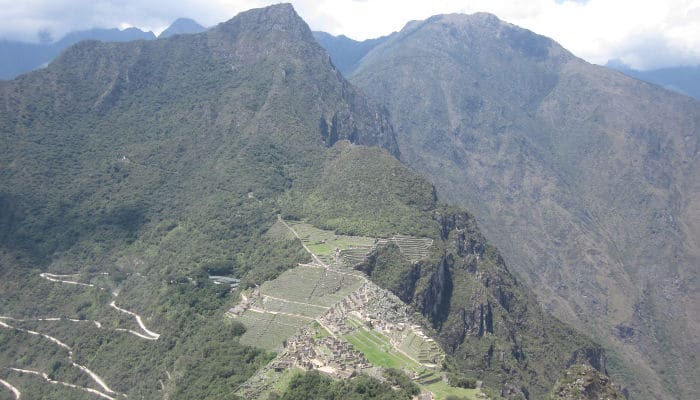
Switchback road (Hiram Bingham highway) as seen from Huayna Picchu
A one-way ticket costs about US$10 while a return ticket currently costs about US$20. Both types of tickets can be bought in Aguas Calientes or at Machu Picchu, if you just need a one-way ticket back.
Queues of visitors returning from Machu Picchu to Aguas Calientes start forming around lunchtime. Expect to queue for at least 45 minutes, so make sure you plan enough time to get back to Aguas Calientes for your train. For example, this equates to roughly a 45-minute queue plus a 30-minute bus ride.
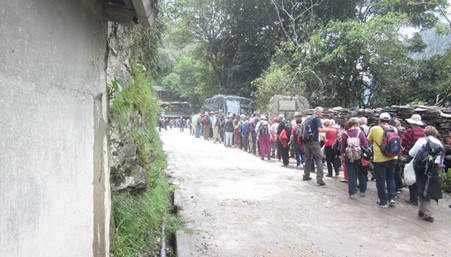
Queues for buses at Machu Picchu start forming around lunchtime and waits can be as long as an hour on bad days
How to Get to Machu Picchu and Entrance Tickets
Now that you know how to get to Machu Picchu, the final thing you need to prepare are your tickets to enter Machu Picchu. You cannot arrive at Machu Picchu and expect to buy tickets at the entrance gate! You need to book your entrance tickets to Machu Picchu in advance.
You can book your Machu Picchu tickets in the following places:
- The Peruvian government website.
- The Instituto Nacional de Cultura (INC) in Cusco.
- The Cultural Centre at the Plaza Principal in Aguas Calientes.
Hotels, travel agents, hostels and other third parties also sell Machu Picchu tickets, but I recommend sticking to the first three official ticketing options.
Tickets cost about US45 for entrance to Machu Picchu and are limited to 2,500 available tickets per day. Half price discounts are available to Peruvian nationals or students with a valid ISIC card. If you wish to climb Huayna Picchu or Machu Picchu Mountain, you will need to pay an additional US$15; tickets are limited to 400 permits per day and are available during two available climbing times (07:00 or 10:00).
Please Note: You need to provide your passport number to secure an entrance ticket to Machu Picchu. Keep in mind that tickets are non-refundable and non-transferable.
Tickets are only valid for one day, so if you would like to visit the ruins twice, you will need to purchase two tickets.
Along with your passport, please also remember to bring other important items:
- insect repellant
- water
- a rain jacket (you never know)
- some spare soles (you have to pay to use the toilet)
You can book a guide outside the entrance gate or indeed in Aguas Calientes. I also recommend taking a guidebook. Proper information of what you are looking at will immeasurably heighten your experience. Ruth Wright’s and Alfredo Valencia Zegarra’s The Machu Picchu Guidebook: A Self-Guided Tour is an excellent read for exploring Machu Picchu.

Get a Machu Picchu trek quote
Start planning your Machu Picchu hiking holiday.
Conclusion
If you found this How to Get to Machu Picchu article useful, please share it on your social network. Or better yet, if you have a blog that is tracing your journey to Machu Picchu, please link to us. We'd love to hear all about your personal insights!
Feel free to ask any questions in the comment section below on how to get to Machu Picchu and more, and we will respond within 24hours (so check back).
Tags: How to get to Machu Picchu, How do you get to Machu Picchu, How to visit Machu Picchu, Machu Picchu how to get there, How to travel to Machu Picchu
References: (1) PeruRail, (2) Inca Rail, (3) Belmond Hiram Bingham

Hi Mark,
If I have bought the 10am huayna picchu permits, will I also be able to go see Machu picchu as well the same day? I travel by Peru rail and get to the area at 9am.
Amazing website and super helpful
Thanks,
Ankit
Hi Ankit, yes, Huayna Picchu is accessed from within Machu Picchu. In fact you need to walk through a good part of the Citadel to get to the start point of the Huayna Picchu hike. All the best!
Hi, we are a family of 4, 2 sons who will be hiking up the most popular inca trail to MP with United Mice. My husband and I will be taking the train. We are thinking to go to Ollay immediately after we arrive in Cusco. Is this a good idea? How and when will we meet up and how do we return to Cusco together? Thank you.
Hi Jane, yes, going immediately to Ollantaytambo is not a bad idea as it’s about 1000m below Cusco. You can meet up with your sons in Aguas Calientes. There is a train from Ollantaytambo to Aguas Calientes. You can then return together by train to Cusco. All the best!
Can i take a train from Ollantaytambo to hydroelectrica so I can walk the rest to MP? I want to do some treking but not a full day. Thanks
Hi Elaine, yes you can get a train from Ollantaytambo to Hydroelectrica and then walk to Aguas Calientes. The walk is about 1-2 hours, depending on how fast you go. Just follow the rail tracks. All the best!
Buenas tardes. Donde puedo encontrar horarios de tren Santa Teresa – Agua Calientes. Gracias
Here we go: https://www.perurail.com/schedules/perurail-sacred-valley/
Hello,
Thank you so much for this helpful information. I had a question regarding the trains. We will be staying in Cusco. Does the Peru Rail train (from Cusco) go all the way to Machu Picchu, or does it only go to Aguas Calientes where we will need to take the bus? Also is the $65-75 train price round-trip or one-way? Thanks for your help!
Hi Charlotte, the train goes to Aguas Calientes, the town below Machu Picchu. From here you can hike up to Machu Picchu or get a bus. Train ticket prices may have changed, I recommend checking our Peru Rail or Inca Rail for updated prices. Hope this helps!
Hi,
We are going to stay in Cusco for few days and we were planning to get to Hidroelectrica by colectivo and from there hike to Aguas Calientes. Spend the night there and then climb to MP. It seems the cheapest option (only pay colectivo from Cusco to Hidroelectrica and one night in AC).
How do we get back? Same way? Can it be done on the same day we visit Machu Picchu? Meaning we would get up very early, climb up, spend the day visiting MP, climb down to AC, hike to Hidroelectrica and catch a colectivo to Cusco all in the same day? Or do you recommend spend another night in AC?
Thank you very much! 🙂
Hi Monica, the best way to get back to Cusco from Machu Picchu is to catch a train back to Ollantaytambo from Aguas Calientes and then get a minibus / taxi back to Cusco. If you leave Machu Picchu at around 15:00, this will give you enough time to catch the train in Aguas Calientes. The bus from Machu Picchu to Aguas Calientes takes about 15 minutes, but there is often a queue in the afternoon to collect a bus at Machu Picchu. If you are looking for a budget option then getting a minibus from the Hidroelectrica is also an option. There are two ways to get back to the Hidroelectrica. 1. Hike from Machu Picchu / Aguas Calientes back to the Hidroelectrica (from AG this is about an 1-1.5 hour hike, from MP it is about 1.5-2 hours). or 2. you can take a train from Aguas Calientes to Hidroelectrica (this is about 15 minute train ride – I don’t know the current cost). Either way it is possible to visit Machu Picchu from Aguas Calientes and get back to Cusco on the same day. Hope this helps!
Hi! How do you recommend is the cheapest way to get back to Cuzco after touring Machu Picchu?
Thanks so much!
Hi Mari, Train is the cheapest way back to Cusco.
I beleive there are cheaper ways . From what I have read you can take the white vans (mini buses) or colletivo public buses
Hi,
My partner and I are travelling SA for 3 months and Machu Picchu is my number 1 thing to do, however we aren’t entirely sure when we will get there on our travels. Is there any way of getting a flexible ticket as I don’t want to book it to find we won’t get there on time!
Thank you
Hi Kim, if you are planning to take the train from Cuzco or Ollantaytambo then you can book a few days in advance, sometimes you can even get tickets on the day but I wouldn’t leave it till that late. All the best.
If I decide to do the three 3nights and four days, where can I store my other belongings? And do I need to have all camping gears with me? I’m coming in from California.
Hi Cindy, you can store your belongings at your hotel in Cuzco. All the best!
I understand I must provide my passport number to buy tickets for MP. The # I have now will not be the # when I arrive to Peru (updating USA passport now). Will this be a problem at the MP entry?
Hi Leezer, I would take your old passport just in case. Generally they check if the name matches, but it would be prudent to have your old passport with you if you can. Cheers!
Hello,
Planning on doing 1 day at Machu Picchu. We will take the early train from Ollantaytambo and spend the day there, then take the train to Cuzco.
Was wondering about the train back from MP to Cuzco. Is it necessary to book this in advance, or can you show up at the train station in Aguas Calientes and buy your ticket same day?
Thanks!
Hi Mychael, I would recommend buying your return ticket in advance. It can be very busy so to avoid disappointment I would book in advance.
Hi. We’re planning to head back to Cusco after MP via Ollantaytambo the same day. We arrive in Ollanta at 8PM. Will there still be a collectivo by then? Or how safe is a taxi from Ollanta to Cusco? Thanks!
Taxi’s are generally safe, but the cost for 2 people can be pretty hefty. There are buses or min-vans where you can partner up with other travellers to get back to Cusco. Hope this helps!
Hi,
I understood that a bridge was flooded away in Santa Teresa. I would like to use the Santa Teresa route to MP. Is this possible in september?
And what about the rain in this period?
Thanks, your description is very helpful.
Hi Marianne, September is a good time to trek – probability of heavy rain is low. I believe the Santa Theresa trek is open.
Hi, I ‘d like to know if I can go back from Machu Picchu to Ollantaytambo by bus or colectivo, I mean when I finished sightseeing machu Picchu about 4-5 p.m Is still any buses from Aqua Caliente to Santa Maria and later to Sanata Teresa and Ollaya? I have read that only 20 l backpack you can take to Machu Picchu, if I will have 26 l they do not let me come in with it? Your article is very usful. Thank You very much Marzena
Hi Marzena, Thanks for your question. Unfortunately I don’t know the answer. Your best bet might be to check in Cuzco before you leave for Machu Picchu. All the best!
hey,
thanks for all the great information.
Im a little confuse due.. I want to travel to machu picho and spend like a week in cusco and around.
what do you think will be the best way for me to get to machu picho?
I will probabaly arrive tocusco with a night bus from lima
thank alot
Hi Adar, you can either trek to Machu Picchu on one of the many trails that lead to Aguas Calientes – see: https://www.machupicchutrek.net/hike-to-machu-picchu/ or you can catch a train to Machu Picchu from Cuzco or Ollantaytambo. Hope this helps!
Hi, this is all great information. I just have a question about the minivan from Ollantaytambo to MP. I am flying into Cusco and plan on going right to Ollantaytambo to take the train from there. I saw that you catch the minivan from Paradero Pavitos, but I am just wondering how far that is from the airport and will I need to take a taxi to get there or do they also have collective minivans from the airport. Thanks for you help.
Hi Kim, I believe the only way to get to Ollantaytambo from Cusco airport is by taxi (could be wrong, though). If you are aready in Cusco centre (i.e. the main square called Plaza de Armas) then you can take a 15 minute walk to Avenida Grau (5 minutes by taxi). From here you can get a shared colectivo which leave every 20–30 minutes for Ollantaytambo. A colectivo is a minivan or small bus where passengers share the cost of the journey. There are no scheduled times for collectivos, they simply wait until full before heading off. The journey from Cusco to Ollantaytambo takes around about 1h 45 minutes, and costs 10–15 Soles per person.
Hello,
Can you send me the actual schedule of the trains between la Hidroelectrica and Aguas Calientes and vice-versa? Do the foreigners can take any of those trains? Thank you.
Hi Daniel, Here is the timetable from Peru Rail: http://www.perurail.com/destination-machu-picchu. Inca Rail can be found here: http://incarail.com/itinerarios.html